9 Steps To Clean Gutters

PHOTO: Madison Johnson
1. Maintaining a clean home goes beyond dusting and vacuuming—one of the most crucial yet often overlooked tasks is cleaning your gutters, which plays a vital role in protecting your home from water damage and structural issues.So, why is it Important to Clean Your Gutters? The drainage system of a house controls the flow of rainwater from the roofline, which protects the roof, walls, foundation, and landscape of the house. If debris accumulates in them, it may lead to sagging gutters, mold growth, damp basements, leaking roofs, or water damage to the interior and exterior of the house. Gutters filled with debris can also become habitats for rodents and other pests. Neglecting the maintenance of gutters can result in costly repairs in the future. Gutters should be cleaned at least twice a year – in spring and autumn. If there are pine trees near your house, the needles should be removed every three months to reduce the risk of clogging the gutters and downspouts. If you are not comfortable climbing ladders, hiring professionals to clean your gutters is an option. The cost varies depending on the location, and it is based on the length of the gutters you have. It usually costs more if your home has two or three stories.

PHOTO: Madison Johnson
2. Regular gutter maintenance is essential to protect your home from water damage, and over time, gutters may need repairs or replacement. Signs that it's time to act include cracks or splits, which can allow water to seep into the fascia, shingles, or foundation—these sections should be replaced. Peeling paint or rust indicates prolonged water exposure, so clear any blockages and touch up or replace the affected paint. Standing water or mold near the foundation suggests clogged gutters, which should be cleaned, and if the issue persists, replacing the damaged sections may be necessary. Water stains or damage beneath the gutters can signal leaks or overflow, requiring repair or replacement. Finally, sagging gutters are a clear sign that they need replacement, as they can no longer drain properly. This is also a good opportunity to upgrade to gutter guards or seamless gutters. Addressing these issues promptly will prevent water damage to your garden, outdoor areas, and home, while regular inspections help keep your gutters functioning effectively.
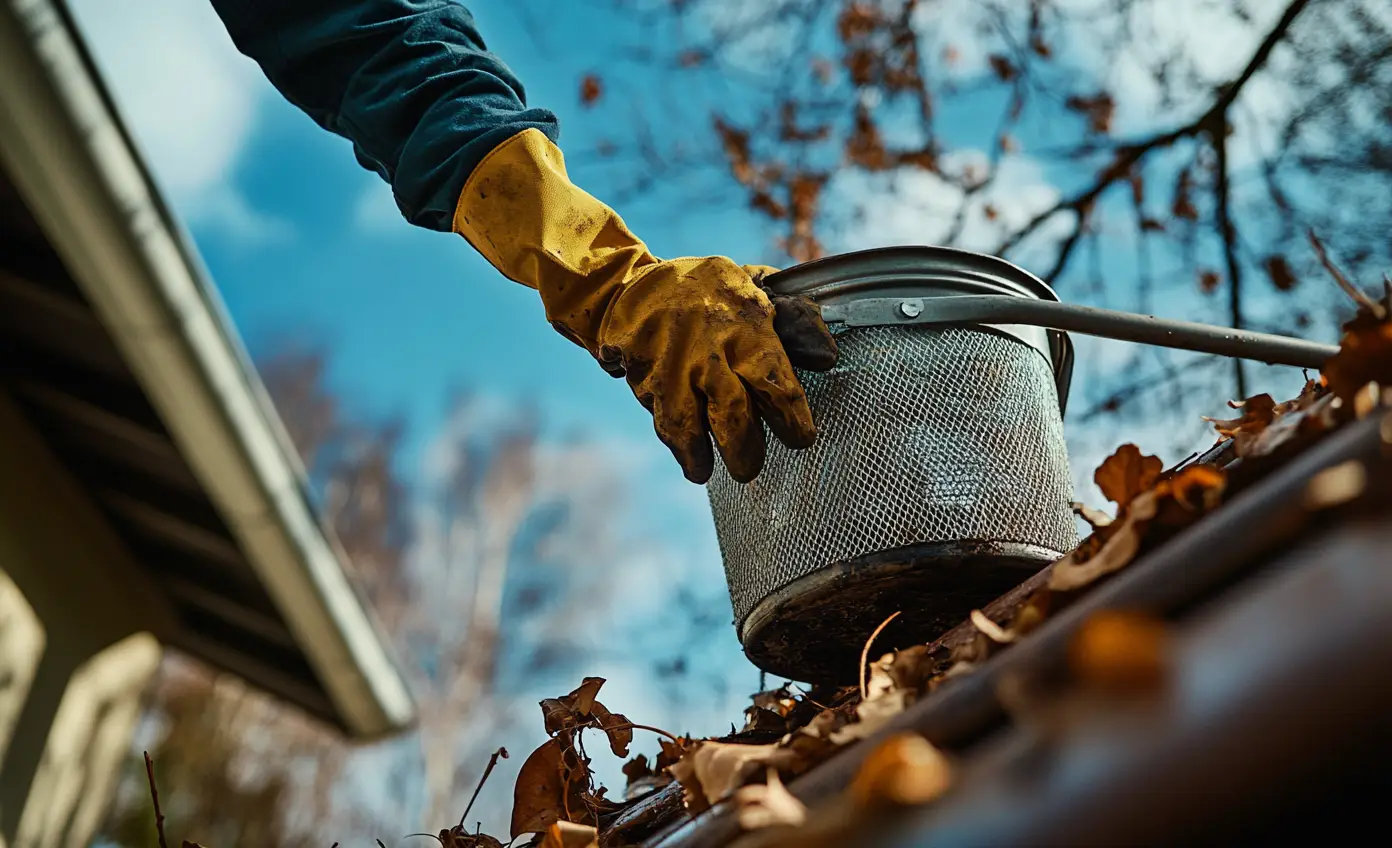
PHOTO: Madison Johnson
3. Guidelines for How to Clean Your Gutters and Downspouts Regular and comprehensive cleaning ensures that gutters remain in excellent condition. It requires just a few tools and a couple of hours in the afternoon to ensure that water flows off the roof and away from the home. Performing gutter cleaning in the early spring helps prepare them for the heavy rains of spring and summer. In early fall, clear out leaves and other debris that have accumulated during the warmer months. Whenever possible, try to avoid cleaning gutters immediately after a rainstorm. Waiting a few dry days before cleaning gutters allows the debris to dry out, simplifying the cleaning process. Begin your gutter cleaning project at the downspout and work towards the end of the gutter that is closed off.
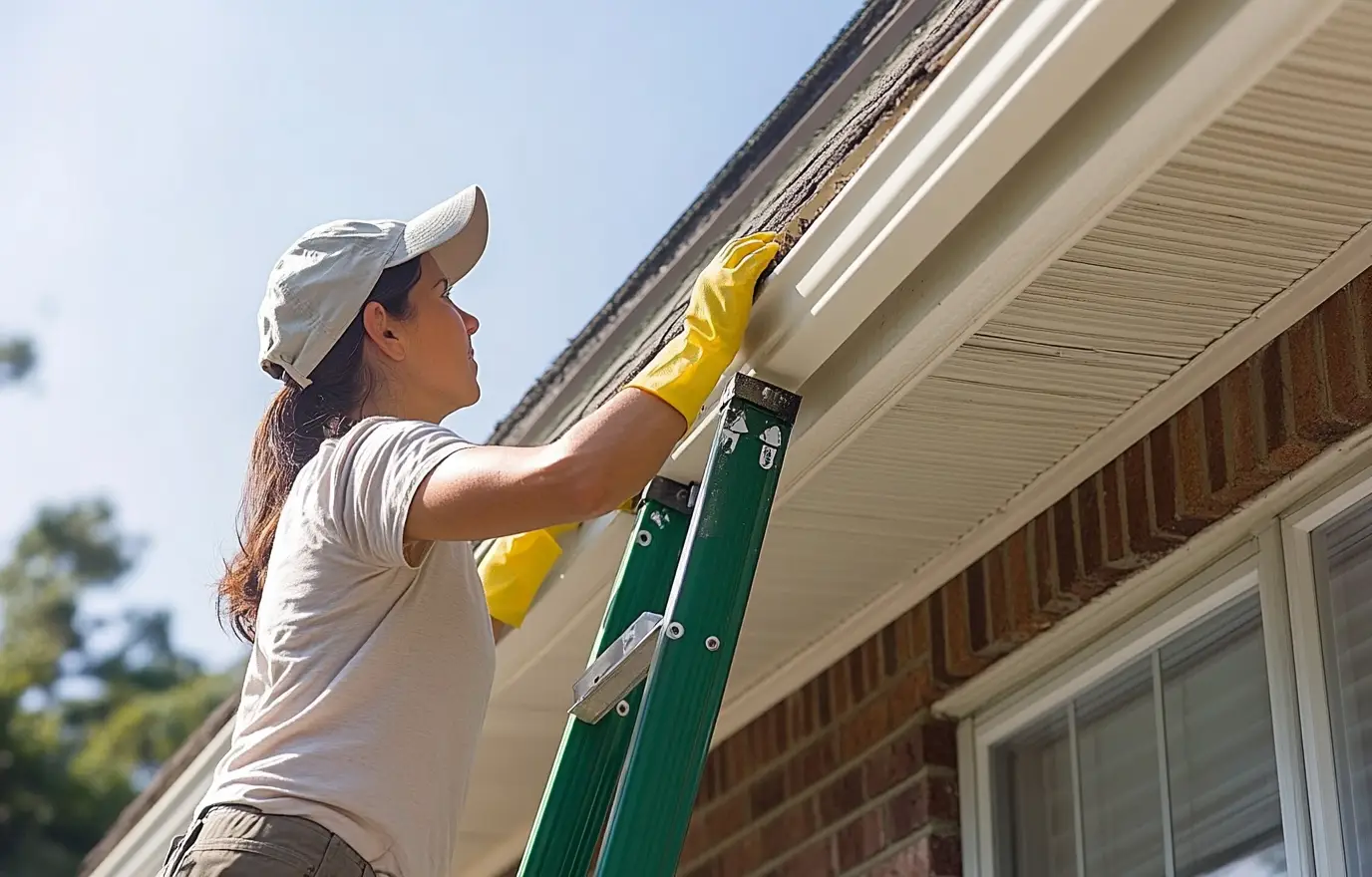
PHOTO: Madison Johnson
4. Practice Ladder Safety Cleaning gutters involves using ladders, and safety is paramount. Do not climb higher than the second-to-last step or rung. Avoid overreaching. Always use a step ladder on stable, level ground if possible. For two-story houses, it is advisable to use an extension ladder. When using an extension ladder, employ a ladder stabilizer to ensure the ladder remains steady. If you feel uncomfortable using ladders, it may be best to hire a professional.
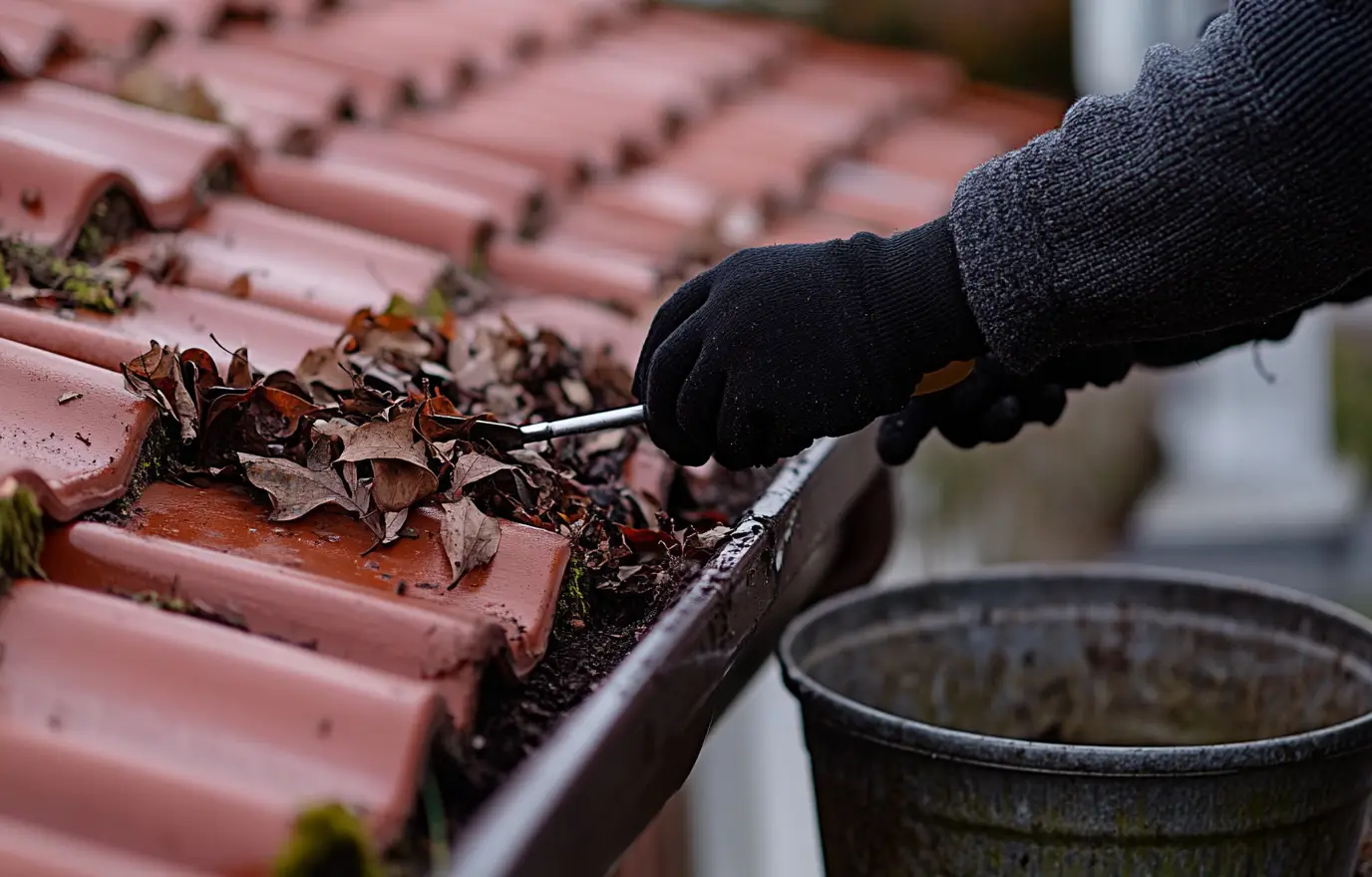
PHOTO: Madison Johnson
5. Clear Debris From the Gutters Keep two buckets on hand to simplify your task. One bucket is for the debris you collect, while the other is for storing your tools. Attach the buckets to your ladder for convenient access. Wear safety goggles to prevent bits of dried leaves and other debris from getting into your eyes. Put on rubber gloves over your work gloves if the debris is wet. This will help keep your hands dry while also protecting them. Start cleaning by the downspout. Make sure your ladder is placed securely on level ground before ascending. Take out and clean the downspout strainer. Manually remove large debris like leaves and twigs. Use a trowel or a gutter scoop to deal with compacted debris.
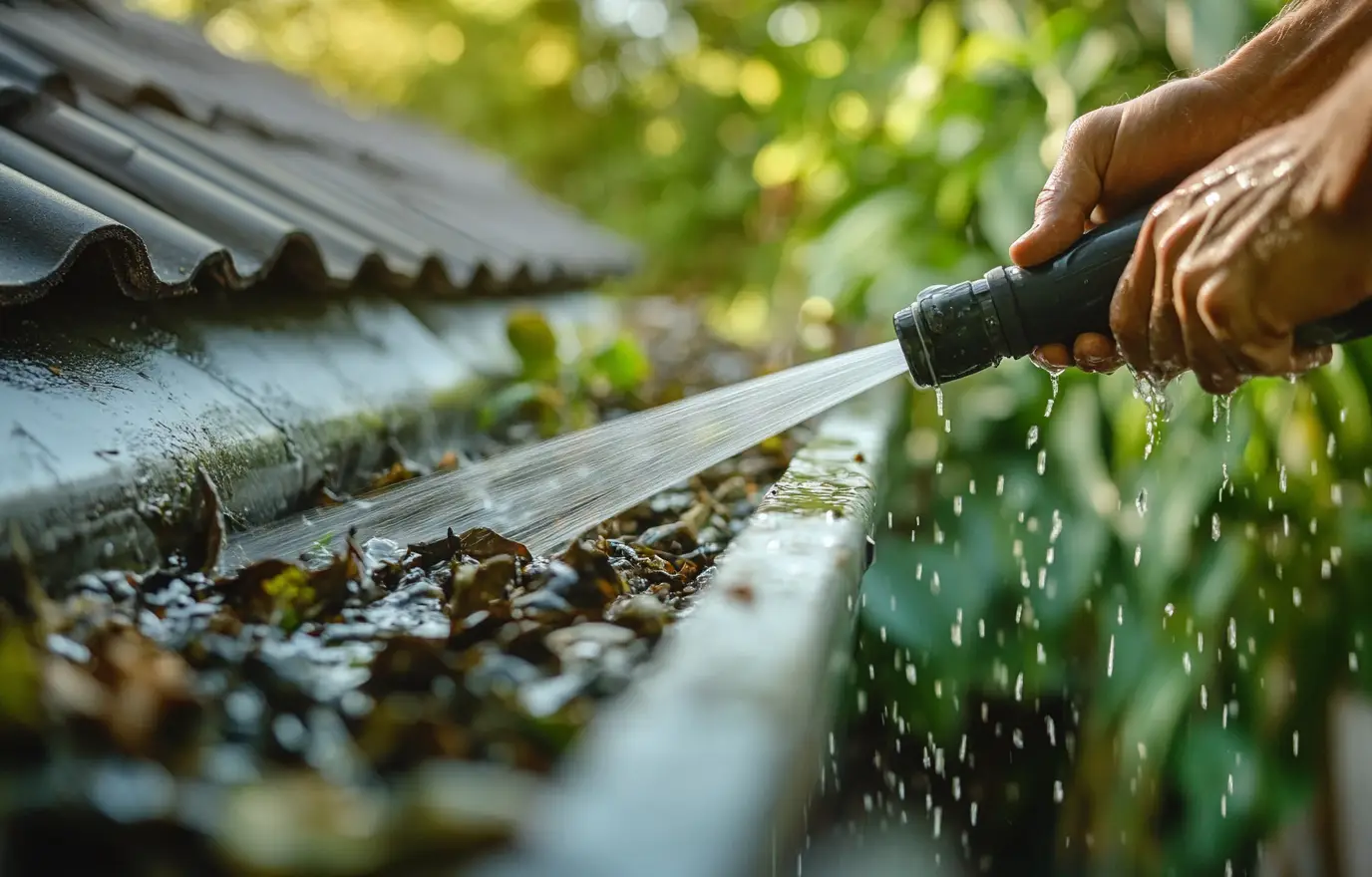
PHOTO: Madison Johnson
6. Flush the Gutters Once most of the debris has been cleared, rinse the remaining bits and dirt out of the gutter using a garden hose. Attach a spray nozzle to your garden hose. Start flushing the gutter with water from the far end and work towards the downspout. Employ a forceful jet of water and be careful not to spray beneath the roof shingles. Special attachments for gutter cleaning on your garden hose can simplify the task. For the most effective cleaning of gutters and downspouts, use a pressure washer.
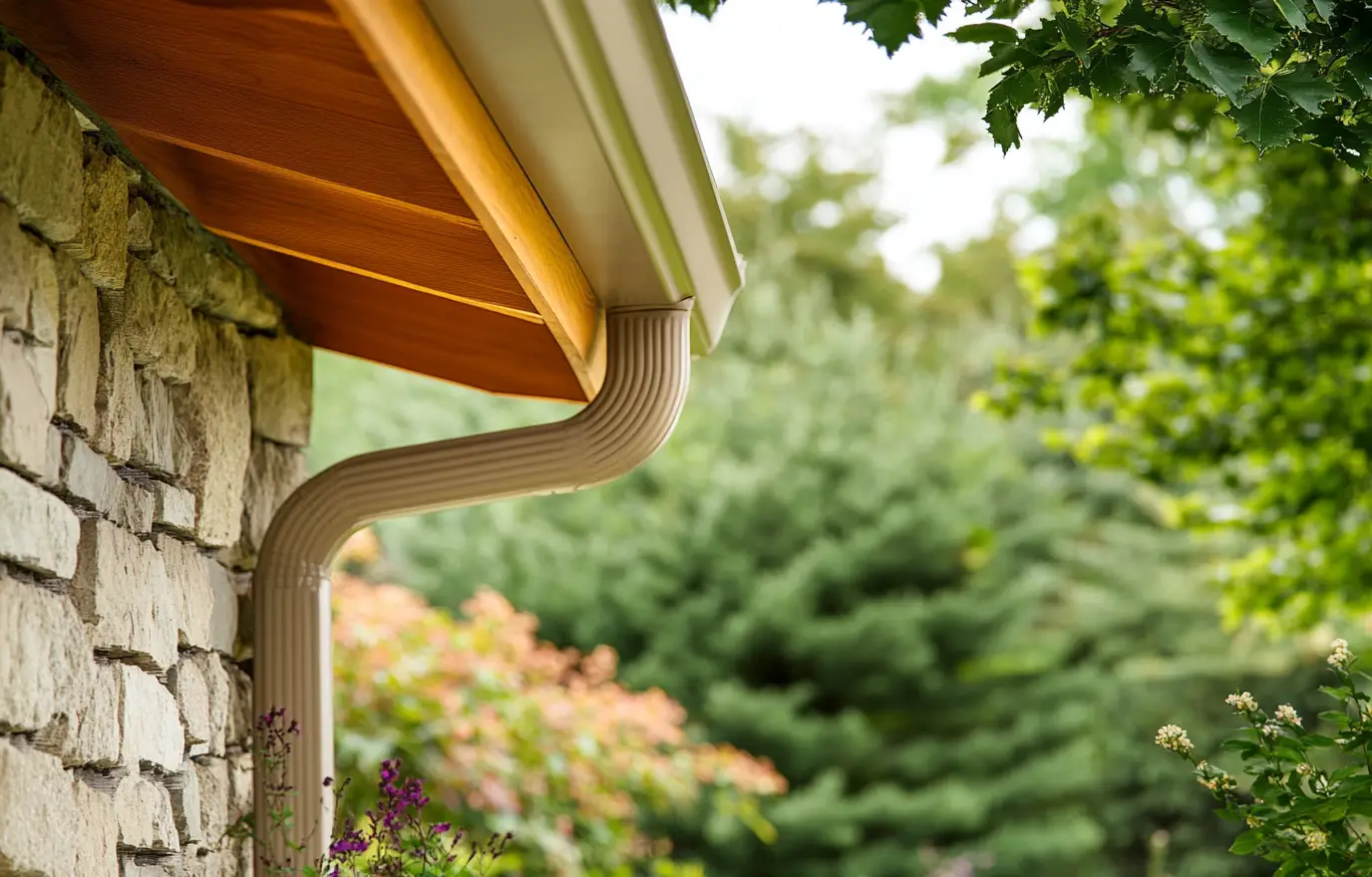
PHOTO: Madison Johnson
7. Check the Downspouts Once the gutters are clean and the water from flushing isn't draining quickly, inspect the downspout for obstructions and any trapped debris. Turn on the hose and spray down the downspout. If the volume of water coming out is less than what's going in, there is a blockage. Insert the hose into the downspout from the ground up. Turn the hose on at full force to attempt to dislodge the clog. If this doesn't remove the clog, use a plumber's snake to break through the blockage. If you have a downspout that leads into an underground tile system, you will need to remove the bottom end to access the longer part of the downspout.
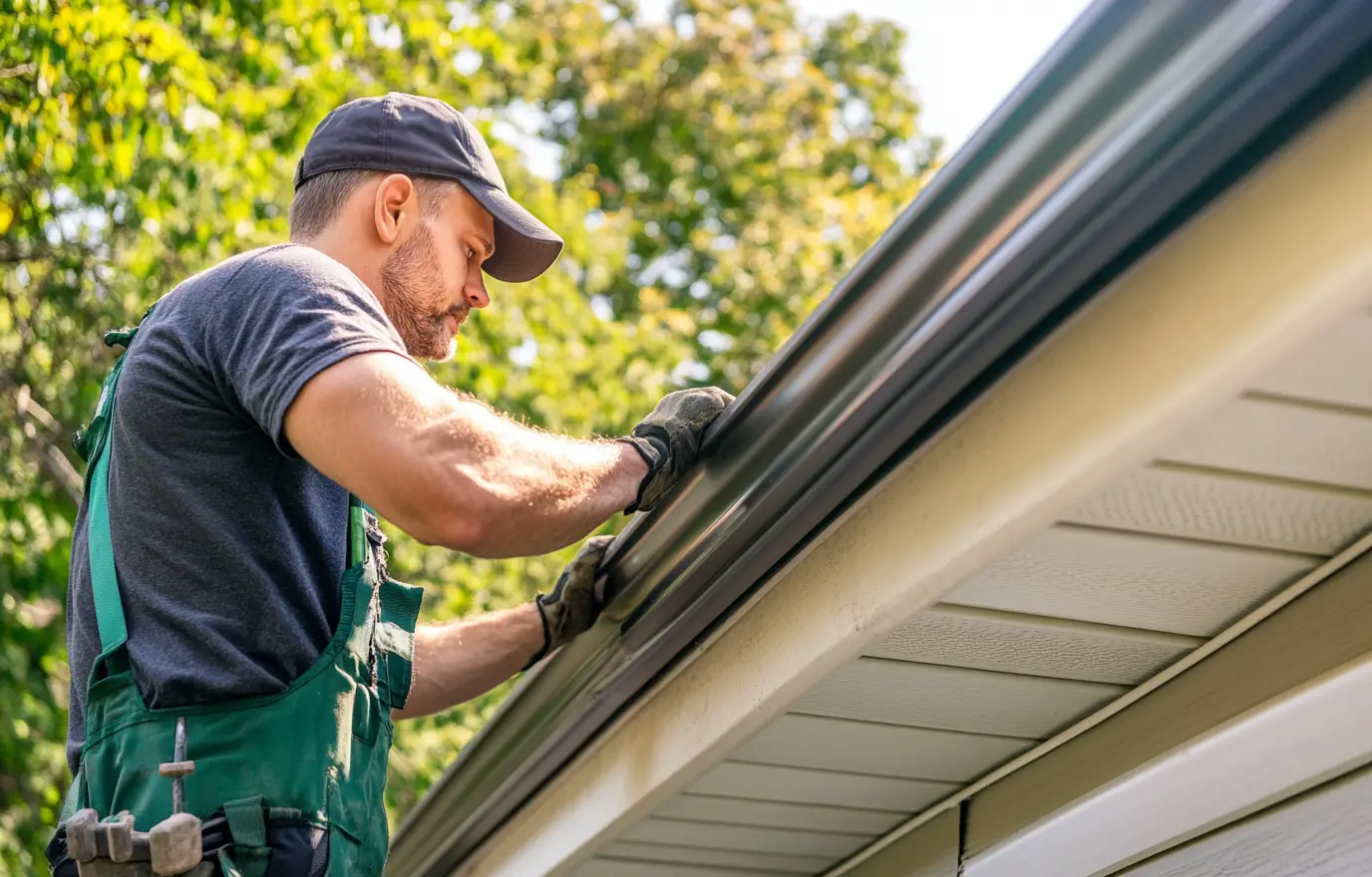
PHOTO: Madison Johnson
8. Check for Gutter Drainage and Slope Once the downspout is clear of obstructions, flush the gutters again. Verify that there is proper water flow and drainage. Also, check for any leaks at the joints. If there is any water pooling in the gutter, it indicates that the gutter is not sloped correctly. Gutters should have a slope of 1/4 inch every 10 feet towards the downspout. If the gutters are not sloped properly, remove the hangers to adjust the gutters to the correct angle. Ensure that all the gutters are securely fastened to the house. Inspect each section of the gutter and the downspout for any damage. Add support hangers or reattach the gutters to the fascia if necessary.
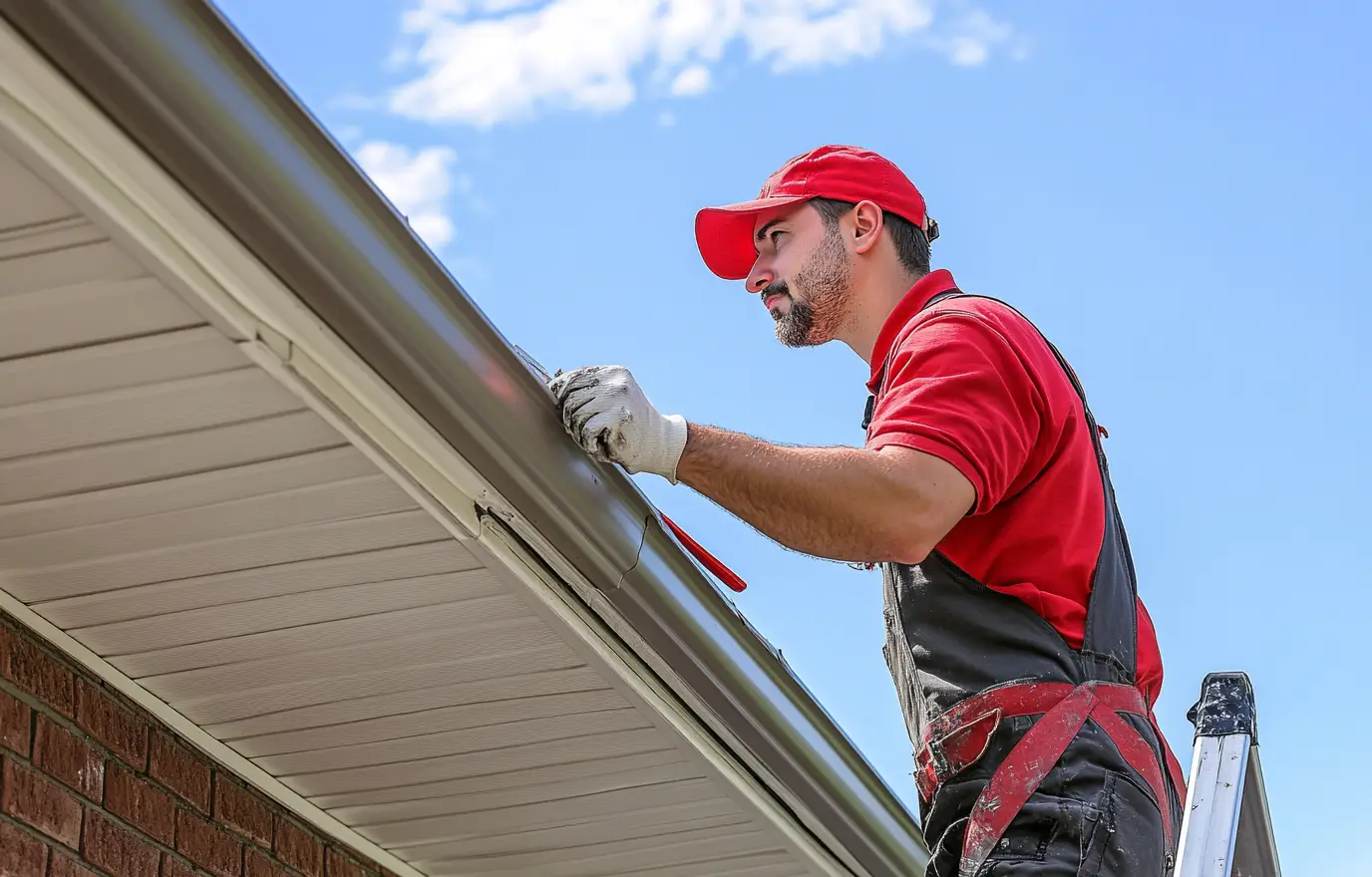
PHOTO: Madison Johnson
9. Complete the Gutter Cleaning Seal any leaking seams and joints using gutter sealant, adhering to the product's guidelines. To improve the appearance of the outside of the gutters, use a pressure washer to remove any mildew and dirt. Touch up with paint as needed. Now that your gutters are clear of debris and functioning properly, think about installing gutter guards to minimize the effort required for future gutter cleanings. Gutter cleaning is an essential home maintenance job. With the right equipment and this guide on how to clean gutters, you can handle the work and repairs on your own.

